




The American Nurses Association - Illinois (ANAIllinois) is proud to announce that registration is open for “ Student Nurse Political Action Day 2021: Connect, Grow, Energize, ” to be held on April 13, 2021, virtually.
Each year, Student Nurse Political Action Day brings together hundreds of nursing students from across the state in Illinois’ capitol for a day of learning, networking and advocacy. Most recently, the event drew 1004 student nurses from 37 Illinois colleges/schools of nursing.
The health and safety of Student Nurse Political Action Day attendees are always of utmost importance. In light of the COVID-19 pandemic, the ANA-Illinois reimagined this year’s event, and is pleased to present #SNPAD2021 as a one-of-a-kind, virtual experience—at no cost to attendees.
Our 2021 event will:
● feature an exceptional keynote speaker who will inspire and provide concrete lessons on how to weave inclusive thinking into one’s daily life.
● spark discussion, encourage learning, and foster connection.
● deliver relevant and timely content for the current state of nursing in Illinois.
● energize and fuel the growth of future nurse leaders!
The virtual event is completely free to attend, and open to student nurses of all ages. Topics will include public health, school nursing, diversity and inclusion, and legislative issues facing the nursing profession.
For more information or to register visit http://bit. ly/2021SNPAD
Your nursing experiences with the COVID-19 pandemic demonstrate the nursing profession at its best. Your stories are of great interest to fellow nurses, as well as to the general public.
Have you worked with COVID-19 patients on an acute inpatient unit? What has the experience been like for you, your colleagues, and your patients? Do you have a memory of a particular patient (no names to maintain HIPAA)? Can you relay a particularly stressful event that impacted your staff members?
Do you work in a community health or a primary care setting? Can you relate the impact of the epidemic on persons from underserved populations? Were you able to teach individuals ways to protect themselves from the Coronavirus? How has the virus affected you and the communities that you serve?
How has the COVID-19 pandemic affected your practice of nursing? What measures have you taken to protect yourself, your family members, and your patients? What new skills or nursing knowledge have you acquired from the pandemic experience? What experiences have you had with distance learning, virtual clinical settings for nursing students, ZOOM meetings, social media, homeschooling, or other adaptive measures?
How has the COVID pandemic affected your personal life? Have you been furloughed, laid off from work, or moved to a different practice setting? What coping techniques have you used to deal with the stress generated by the pandemic? How have you and your family members coped with the self-

Cheryl Anema Ph.D., RN
In 2021 we continue to deal with the ongoing pandemic with COVID-19. We continue to make progress and learn more about the virus, possible side effects, short- and long-term impact, and now the new vaccines. It will take a while before the world catches up with the virus. We are learning how to manage in a world of change, new adventures, new practices, even new ways of learning.
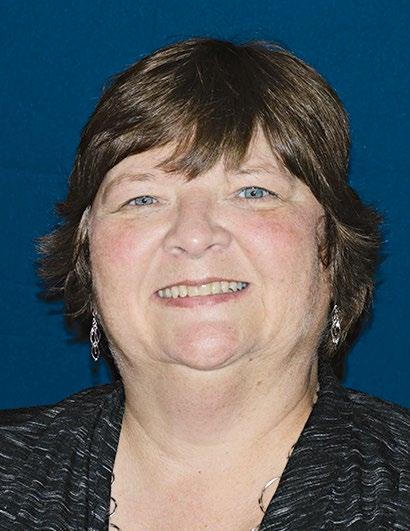
Cheryl Anema PhD, RN
These changes affect not only direct patient care and nursing practice but also nursing education. "Nursing education will continue to engage in active learning strategies that integrate technology through simulation, both live and virtual. Classrooms will embrace both face-to-face and virtual learning, as well as engage with applications for health promotion that facilitate learning with students and patients, like telemedicine" (Kelbach, 2021, para. 12). Although simulation in nursing education is a proven pedagogy, with the Next Generation of NCLEX and testing critical thinking through case studies, the National Council of State Boards of Nursing (NCSBN) hopes to address some of these concerns.
The INF is committed to funding scholarly initiatives that promote people's health and the development of the nursing profession. Now, more than ever, we need to identify the needs of the people and the profession. We need to develop support for furthering the public and professional education surrounding COVID-19, variant viruses, and vaccines. More research is needed around such things as PE use or availability, donor plasma, and the long-term effects on mental health of those caring for those with COVID-19, as well as those that contracted the virus. We are only in the infancy of understanding this virus.
Pivoting through ever-changing policies and standards of care is the new norm. This has added a new level of stress to our healthcare providers, especially those nurses working at the bedside. How do we prepare our nursing students to handle these situations we have never had



to deal with before now? Do we do enough for the selfcare of our caregivers – nurses? I challenge some of our nurse researchers to look at some of these unknowns and begin the process of understanding through research. Is there a better way to prepare our new graduate nurses for patient care when currently, most of their experiences have been moved to simulation? Is simulation the answer?
I have to be honest in that I have some fear for the new graduates. I currently teach NCLEX review for graduating seniors in nursing schools around the country. I have heard on multiple occasions, "how would I know that? I have never been to a hospital?" Due to COVID restrictions for clinical sites, some students are graduating today, with little to no hospital clinical experience. This may be the answer, but are the hospital sites ready to educate and orient these new graduates?
These are just some thoughts I have had over the past months. As nursing professionals, it is our responsibility to ensure our patients are receiving the best care possible. It is through education and research that this care is developed. The Illinois Nurses Foundation (INF) needs your help to help the people of Illinois and the nursing profession.
The INF is currently collecting "YOUR" stories of COVID-19. We want to hear how it has impacted you, your family, loved ones, and your professional practice. We intend to pull the stories together and create a book to be released later this year. All proceeds from the sales will be donated to the INF. Submit your story today to susan@ sysconsultingsolutions.com
It is not too late to order your Illinois "Nursing" License Plate through the Secretary of State. When you chose your license plate, look for the specialty nursing plate. For every nursing specialty plate ordered, the State of Illinois will send $20 to the INF. The INF Board of Directors has earmarked this money to build our Grant and Scholarship programs.
Remember, your donations to the INF are needed on an ongoing basis to meet our goals and support our vision and mission of transforming healthcare through the power of nursing in Illinois. Donating even $10 a month can go a long way. If you feel you can afford $10/month to support nursing advancement, please go to https://www. illinoisnurses.foundation/ today and sign up with your credit card or bank to be a monthly donor. Thank you in advance for your support!
Kelbach, J. (2021, January 10). 25 nursing school leaders tell nursing students what to expect in 2021. RegisteredNursing. org. https://www.registerednursing.org/articles/25-nursingschool-leaders-students-expect-2021/
INF Board of Directors
Officers
Cheryl Anema PhD, RN
Brandon Hauer MSN, RN
Cathy Neuman MSN, RN
Karen Egenes EdD, RN
Directors
Maureen Shekleton PhD, RN, DPNAP, FAAN
Alma Labunski PhD, MS, RN
Linda Olson PhD, RN, NEA-BC
Amanda Buechel, BSN, RN, CCRN
Lauren Wojtkowski BSN, RN, CEN
ANA-Illinois Board Rep
Stephanie Yohannan, DNP, MBA, RN, NE-BC
Colleen Morley DNP, RN, CCM, CMAC, CMCN, ACM-RN
Susana Gonzalez MHA, MSN, RN, CNML

ANA-Illinois Board of Directors
Officers
Elizabeth Aquino, PhD, RN
Monique Reed, PhD, MS, RN
Jeannine Haberman DNP MBA, RN, CNE
Colleen Morley, MSN, RN, CMCN, ACM
Directors
Holly Farley, EdD, MS, RN
Susana Gonzalez, MHA, MSN, RN, CNML
Nicole Lewis, DNP, APRN, FNP-BC
Stephanie Yohannan, DNP, MBA, RN, NE-BC
Zeh Wellington, DNP (c), MSN, RN, NE-BC
Editorial Committee
Editor Emeritus
Alma Labunski, PhD, MS, RN
Chief Editor
Lisa Anderson-Shaw, DrPH, MA, MSN
Members
Cheryl Anema PhD, RN
Deborah S. Adelman, PhD, RN, NE-BC
Linda Anders, MBA, MSN, RN
Kathryn Booth, MSN, RN, CNL
Nancy Brent, RN, MS, JD
Irene McCarron, MSN, RN, NPD-BC
Linda Olson, PhD, RN, NEA-BC
Lanette Stuckey, PhD, MSN, RN, CNE, CMSRN, CNEcl, NEA-BC
Executive Director
Susan Y. Swart, EdD, MS, RN, CAE
ANA-Illinois/Illinois Nurses Foundation
Article Submission
• Subject to editing by the INF Executive Director & Editorial Committee
• Electronic submissions ONLY as an attachment (word document preferred)
• Email: syswart@ana-illinois.org
• Subject Line: Nursing Voice Submission: Name of the article
• Must include the name of the author and a title.
• INF reserves the right to pull or edit any article / news submission for space and availability and/or deadlines
• If requested, notification will be given to authors once the final draft of the Nursing Voice has been submitted.
• INF does not accept monetary payment for articles.
Article submissions, deadline information and all other inquiries regarding the Nursing Voice please email: syswart@ana-illinois.org
Article Submission Dates (submissions by end of the business day) January 15th, April 15th, July 15th, October 15th
Advertising: for advertising rates and information please contact Arthur L. Davis Publishing Agency, Inc., P.O. Box 216, Cedar Falls, Iowa 50613 (800-626-4081), sales@aldpub.com. ANA-Illinois and the Arthur L. Davis Publishing Agency, Inc. reserve the right to reject any advertisement. Responsibility for errors in advertising is limited to corrections in the next issue or refund of price of advertisement.


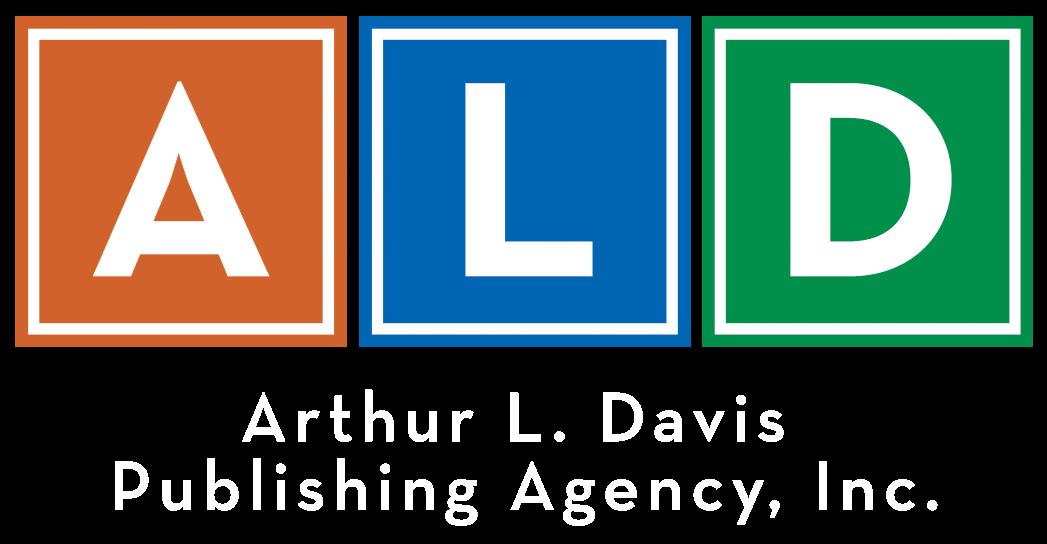



Acceptance of advertising does not imply endorsement or approval by the ANA-Illinois and Illinois Nurses Foundation of products advertised, the advertisers, or the claims made. Rejection of an advertisement does not imply a product offered for advertising is without merit, or that the manufacturer lacks integrity, or that this association disapproves of the product or its use. ANA-Illinois and the Arthur L. Davis Publishing Agency, Inc. shall not be held liable for any consequences resulting from purchase or use of an advertiser’s product. Articles appearing in this publication express the opinions of the authors; they do not necessarily reflect views of the staff, board, or membership of ANA-Illinois or those of the national or local associations.
Dear Illinois Nurse Colleagues, First and foremost, I hope you are doing well and finding effective strategies for selfcare. As we move into 2021 with optimism and hope that a new administration and COVID-19 vaccines will move us in a positive direction, let us also celebrate the annual Gallup Poll recognition naming nursing as the most trusted profession 19 years in a row!
Congratulations on a continued and well-deserved honor!
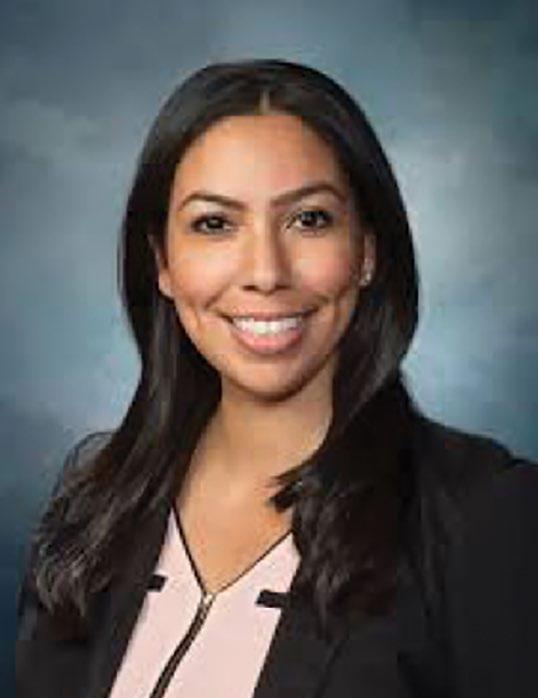
Liz Aquino, PhD, RN
Due to the pandemic, how ANA-Illinois has traditionally connected with members across the state has had to change, and we will continue to host our upcoming events virtually. Our goal is to create virtual events that are engaging while informative. Information and registration for all forthcoming events and webinars can be found at ana-illinois.org
I will highlight a few exciting upcoming virtual events that also offer nursing continuing education contact hours. Nurse educators…please promote Student Nurse Political Action Day with your students on April 13th. It’s an event that helps nursing students understand critical topics and legislative issues impacting healthcare and the
nursing profession. The next day, April 14th, is Nurses Day at the Capitol. Previously known as Nurse Lobby Day, this event has been newly branded as a collaborative event with the Illinois Society for Advanced Practice Nursing. Although we won't be traveling to Springfield together, you will learn about opportunities to continue to advocate for nursing and healthcare issues. To stay informed on current advocacy efforts, sign-up as an Advocate on the ANA-Illinois Advocacy Portal to receive email updates.
Sharing your personal first-hand experiences and perspectives is valuable to helping direct and advance ANA-Illinois's work; we want to hear your voice. Reach out if you have ideas, questions, concerns, or need additional support. We appreciate all that you do for your patients, your community, and the nursing profession.
Sending thoughts of good health and peace; and looking forward to the day when we can safely gather together again.
Sincerely,

Elizabeth Aquino,
PhD,
RN President, ANA-Illinois @LatinaPhDRN

NURSES! Please Tell Us Your COVID-19 Story continued from page 1
quarantine experience? Have you experienced losses related to the pandemic, such as the death or illness of a significant other or colleague? Have you been forced to cancel a significant event, like a wedding, graduation, or even a funeral? Have you contracted COVID-19; what was the experience like for you? What are your fears and hopes for the future?
The Illinois Nurses Foundation (INF) would like to gather your stories for publication. By submitting your stories to us, you grant the INF permission to publish them. Please indicate your consent for us to publish your name or indicate that you would prefer that your story be published anonymously. Institution names will not be published.
Please submit your story (or stories as an attachment to an email) at: syswart@ana-illinois.org Please include your name, daytime telephone number, email address, mailing address. If you have photos to accompany your story, please send them by email in the JPEG format.
We are living what has become a significant event in the history of nursing. Your personal stories will document the contributions of nurses during this time. We look forward to hearing from you!
We want YOUR COVID STORY!




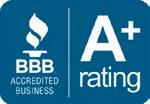

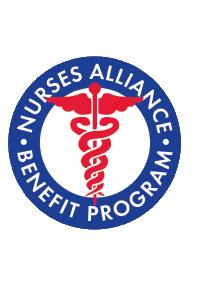

The Association for Nursing Professional Development (ANPD) will hold its annual convention on August 3-6, 2021, which will be presented in-person and online. Access cutting-edge nursing professional development (NPD) education with peers by attending Aspire to Inclusivity, the 2021 ANPD Annual Convention and earn up to 65.5 contact hours! This year, choose to attend in-person in Chicago, Illinois or online. For registration and more information, please contact the ANPD National Office at 312.321.5135 or info@anpd.org. Hotel and Travel, and Health and Safety Information can be found at anpd.org
See you there!!!





Please take a moment today to nominate a nurse deserving of recognition for the work they do.
The Illinois Nurses Foundation is accepting nominations for the 7th Annual 40 Under 40 Emerging Nurse Leader Awards. The awards will recognize 40 Illinois RNs younger than 40 who positively represent their profession by participating in the community as well as professional organizations. Nominations are due April 15, 2021.
Winners will be chosen by their peers based on the following criterion: positively represent the nursing profession by actively participating in the community and/or a professional organization.
The award is designed to recognize nurses in Illinois who demonstrate exemplary professional practice along with community engagement and/or advocacy on behalf of the profession and those we serve.
Awards will be presented on September 23, 2021.
Nominate someone today - https://portal4nurses.com/awards/inf/forty-under-forty

Lisa-Anderson-Shaw, DrPH, MA, MSN, APN-BC, HEC-C
Linda L. Olson, PhD, RN, NEA-BC, FAAN
This is the second article in a new series, Ethics in Action, that is related to ethical issues in healthcare and in our workplace environment. Over the next several issues of The Nursing Voice, we will be reviewing the American Nurses Association (ANA) Code of Ethics for Nurses with Interpretive Statements (ANA, 2015).
The Code consists of nine provisions, with associated interpretive statements. We invite readers to submit questions about bioethics or ethical issues you face in your nursing practice for consideration for inclusion in this new series.
Provision 6 of the ANA Code of Ethics for Nurses with Interpretive Statements (ANA, 2015) supports a safe working environment, which includes voicing concerns about the safety and integrity of the workplace environment. Provision 6 states that “The nurse, through
individual and collective effort, establishes, maintains, and improves the ethical environment of the work setting and conditions of employment that are conducive to safe, quality health care” (ANA, p. 23). Nurses are responsible for respectfully voicing concerns to colleagues and managers when there appears to be an unsafe work environment that may compromise personal safety, the safety of other health care professionals, and of patients.
Example: The Intensive Care unit (ICU) beds are full in a large metropolitan hospital. Most patients have been diagnosed with COVID-19 with over half on ventilators. Medical and nursing staff received training on how to use their personal protective equipment (PPE). A registered nurse who recently started working in the ICU asked the unit nurse manager to not be assigned to COVID-19 patients due to a personal underlying respiratory problem, which is exacerbated when PPE is on for long periods of time. The nurse manager tells the nurse that this request will be honored but only if there is enough nursing staff to care for COVID-19 patients.
Nurses should not have to fear any retaliation for voicing concerns about safety issues to their managers and organizations. The ANA supports nurses for raising concerns about their professional, ethical, and legal responsibilities and protection when caring for patients with COVID-19, and for their own personal safety and the safety of patients (ANA, 2020a). In addition, ANA “condemns employers that retaliate against nurses for advocating on behalf of themselves and their patients” (ANA, 2020b).
Provision 6 addresses the nurse’s role in fostering, creating, and maintaining an ethical workplace environment. The unit management and administration are especially responsible for this component of an ethical work environment, of which one is promoting both patient and staff safety. During this past year, in dealing with the fears and challenges associated with caring for COVID-19 patients, as well as for protecting themselves and their families, nurses have advocated for acquiring the required resources. These resources include sufficient staff and supplies needed to provide protection for nurses and patients. In this example, Provision 5 of the Code also is important: “the nurse owes the same duties to self as to others, including the responsibility to promote health and safety…” (ANA, 2015, p. 19). In this scenario, the nurse has a duty to inform the manager of personal risks involved in patient care. The Code supports the role of nurses in expressing their concerns for participating in situations in which they feel they are put at risk. While assuring adequate staffing, which involves increasing the numbers of staff required to care for COVID-19 patients, it is also important that those patients who are not COVID-19 positive receive safe care as well. Taking care of patients with communicable diseases has its risks, even when PPE is used. As in the example above, there are times when personal risk may be too great. Kadish and Loike (2020) state that “We believe that the question of whether health care workers must risk their lives to treat COVID-19 patients does not have one uniform answer. We do believe that health care workers who specialize in infectious disease or respiratory medicine have a greater responsibility to treat COVID-19 patients than health care workers in other subspecialties of medicine. Moreover, most, but not all, health care workers have a professional obligation to provide some medical service during this pandemic. Society, however, should be understanding of those health care workers who may defer their medical responsibilities because of their own personal health risks or extenuating family responsibilities” (Kadish & Loike, 2020).
References
American Nurses Association [ANA]. (2015). Code of ethics for nurses with interpretive statements. Silver Spring, MD: Nursesbooks.org
ANA. (2020a). ANA disturbed by reports of retaliation against nurses for raising concerns about COVID-19 safety. https:// www.nursingworld.org/news/news-releases/2020/anadisturbed-by-%20%20reports-of-retaliation-against-nursesfor-raising-concerns-about-covid-19-safety/ ANA. (2020b). Nurses, ethics, and the response to the COVID-19 pandemic www.nursingworld.org/coronavirus
Kadish, A., & Loike, J. (2020). A pandemic ethical conundrum –Must health care workers risk their lives to treat COVID-19 patients? STAT. https://www.statnews.com/2020/07/24/apandemic-ethical-conundrum-must-health-care-workersrisk-their-lives-to-treat-covid-19-patients/
While the COVID-19 pandemic has upended the routines of many people’s lives, nursing students and faculty are no different. While many of America’s workers and students were able to switch to learning and working completely remotely, for those whose daily schedules require in-person tasks – like nursing students – adjusting to the new normal has been less seamless. Despite this, both students and faculty in nursing higher education have been able to adapt to a new learning environment while delivering high quality instruction and learning.
With the switch from in-person learning to online learning, nursing students and professors have experienced a variety of issues. Because of the extra layer of separation that occurs with online learning, ensuring that students are keeping up and understanding can, at times, pose a hardship for faculty.
Luckily, many professors have found ways to adapt and keep students on track.
“Our faculty are trying to reach out to students earlier than normal about attendance issues, poor course grades, or anything that would be a sign of a disengaged student,” said Tiffany Greer, Associate Dean of the School of Nursing at Olivet Nazarene University. “The psychological stressors have increased with a year full of health, political, and social unrest. For students also trying to earn a nursing degree, many reach a tipping point more quickly than they normally would. So it is important that professors keep a close eye on their students.”
Beyond the disconnect that can happen with online learning, the technology itself can also cause challenges. Across the board, IACN member institutions indicated that they moved to address this issue quickly.
“We have provided hot spots and computers to students so that no one is left unable to access class,” said Terri Weaver, dean at the University of Illinois at Chicago College of Nursing. “For our undergraduate students, we have also initiated a student success program that will support them socially, psychologically, as well as strengthen skills they will
need to be successful in the most challenging courses. It also includes a high level of mentorship. Many students have taken advantage of this program and it appears that it will be highly successful.”
Despite the issues that remote learning has caused for nursing students and educators, there have also been a number of benefits.
“Our biggest priority during the transition was to maintain the same level of quality education. The switch to online learning has helped us realize that some aspects of our curriculum can be taught online and that we can still maintain the level of quality and engagement that we expect in our program. It has also helped us realize that nursing is a discipline that requires students to engage directly with faculty and patients to learn at the highest level,” said Judy Neubrander, Dean at Illinois State University.
“Online learning has created flexibility for both students and faculty. Online, students have the ability to go back and review specific sections of content–something they have expressed has been very valuable to them,” explains Cindy Hudson, Dean at North Park University. “Even after the pandemic has passed, I think there are strategies we have implemented for COVID that should remain. For example, virtual office hours to meet with students for a ‘face-to-face’ experience. We will continue to encourage students to use online tools like Teams or Zoom for group learning, studying, projects, and to stay connected. These are great resources post-COVID for single parents, or students with other responsibilities.”
Online learning also gives students and faculty options for either synchronous or asynchronous participation. Some content is best presented asynchronously, while other content requires synchronous presentation with opportunities for immediate feedback. According to Diane Salvador, Executive Director of Nursing and Health Sciences at Elmhurst University, having options to use both can meet student learning needs and enhance learning.
Sandie Soldwisch, President of the Saint Anthony College of Nursing, added that “Remote learning has sparked critical
and creative thinking in the faculty - and good things are emerging because of that thinking!”
To ensure quality in the delivery of curricula online, IACN member institutions utilize the Guidelines for Evaluation of Distance Education (On-Line Learning) developed by the Council of Regional Accrediting Commissions (C-RAC), of which the Higher Learning Commission (HLC) is a member. Dr. Joan Libner, Chair of the Department of Nursing and Health at Benedictine University, notes the HLC, which accredits IACN colleges and universities, recently announced a collaboration with the Online Learning Consortium (OLC) to provide access to resources for HLC member schools. Per the HLC website, these resources include webinars supporting “online pedagogy, equitable and inclusive course design, instructional technology for student engagement, and leadership in online education.”
At the Illinois Association of Colleges of Nursing, we understand that the switch to online learning has been difficult, but that it has also allowed for a level of both flexibility and creativity by both students and faculty. Membership stresses that a variety of approaches is needed to make sure that students from different backgrounds feel included and have the opportunity to be successful. If you are a student or educator struggling with the new online environment, please reach out to us for some helpful tips. You can find our contact information at https:// illinoiscollegesofnursing.org/contact-us/.
Lastly, we leave you with this advice about remote learning from Dr. Tina Decker, Chair of the Department of Nursing at Trinity Christian College, that will allow you to set yourself up for success:
“First, create an environment where you can commit to learning, and set up a schedule and space that allows you to set yourself up for success. Online learning often requires more self-accountability and so it has the opportunity to create professional growth.”





Since March of 2020, most hospitals, long-term care, and assisted living facilities have instituted "No Visitor" policies to keep patients, residents, and staff safe from the spread of COVID-19. The restriction of visitors, especially in nursing homes, "cut off over 1.5 million older residents from family and friends, with limited exceptions for end-of-life visits" (Brown, 2020, para. 1). In addition to the "no visitor" policy, residents of residential and long-term care facilities were no longer allowed to leave the facility with family or friends (Anderson-Shaw & Zar, 2020). Residents of nursing homes and long-term care facilities must stay in their rooms for meals. The group activities, such as bingo, crafts, and other group activities, were on hold, leaving residents isolated.
Isolation during illness is not uncommon, but the effects of this pandemic have further isolated people. "Visitor restrictions are reasonable public health measures, but they are inherently inequitable" (Vais, 2020, p. 1), especially for those who have dementia, chronic illness, or other disabilities that isolate them further. When people are isolated in care facilities without family or friends able to visit, they may become frustrated and confused that people they are used to seeing are no longer there. Such isolation can lead to changes in behavior and affect.
In the absence of visiting in person, many hospitals and care facilities have become very creative in finding ways for loved ones to see and hear their family and friends. Facilities use technologies such as Zoom meetings, smartphone apps such as FaceTime, or various other electronic communication aids. Although such technology can bridge the gap of in-person communication, it does not provide a genuinely personal interaction that face-toface does.
Because isolation from friends and loved ones can cause frustration, sadness, and confusion in the elderly and others in care facilities, staff in these facilities have used incredible ingenuity and technology to help patients, family members, staff, and communities bridge the isolation gap during this pandemic.
In Brookfield, Illinois, Cantata Adult Life Services provides independent living, assisted living, and skilled nursing services, all on their 10-acre campus. Cantata Adult Life Services offers a variety of services and resources to help older adults age successfully.
While there was no in-person visitation in the facilities, including the independent living units, the campus staff has done an outstanding job keeping residents in their facilities engaged with each other and assisting residents to connect with others through electronic devices and internal video screens. Kevin Heraty, Chief Development Officer, states, "It is often hard to find the positives in the current pandemic situation. There are often surprises that show the humanity of our care provider heroes in seeing how they care for the residents." Kevin's parents live in one of the assisted living units, and they were able to stay engaged with their large extended family using Zoom to see and chat with family. He remembers how difficult it has been for family members not to see each other in person. Also, ipads were available to residents who could play games and use the internet.
Mary Allen, RN, Director of Case Management, described the staff in various departments at Cantata began offering several programs throughout the day

on the facility's internal TV station. Allen shared, "We offered a lot of live TV programming for our residents, such as cooking classes, fitness classes for all levels, local and national news, current events, bingo, and other game sessions, as well as movies and community church services." The goal is to keep the residents socially engaged in their community, both internal and external communities.
In addition to these programs, there was "Hall Bingo," where residents could open their room doors. A staff member would call out the letters and numbers from the hall and other games, including trivia contests, where residents could participate with others while at an acceptable social distance. During the summer of 2020, outdoor visits with family could be arranged using masks and social distancing, which allowed family and friends to visit in person safely.
Lisa Capone, Facility Transition Manager, also noted that the Cantata Community is a vibrant community within the larger Brookfield community and information to and from the communities is very important. Capone stated "Our marketing department did a great job communicating with staff, residents, family members, and the Brookfield community regarding the effects of the pandemic on our residents and family members. The website is updated often to keep the information up to date and allow transparency to residents and our communities."
The pandemic "no visitor" policies have also hit the disability community in residential facilities very hard. Karen Kelly has a son (Eric) who is 47 years old who is nonverbal, and has severe autism; he has lived in a residential care facility in Southern Illinois for 30 years. He was diagnosed with autism when he was about four years old. Kelly and Eric's dad were always present in his life and would bring him home to stay a few days each month. They would also frequently take Eric out of the facility for lunch or dinner locally at his favorite restaurant. Kelly explained that "Before the pandemic 'no visitor' policy, we would see him about every 10 days and bring him home every three to four weeks for a three to five-night stay. Not having personal contact with him for


many months is very difficult for him and us. We miss our time with him." Eric lives an hour away from his parents.
The facility located in Centralia, Illinois, has been very active in keeping residents in touch with family and friends. Kelly shared, "The staff takes photos of our loved ones, which are then posted to the Facebook page by the parents' association president. Staff also engage the residents with frequent activities such as crafts, group pizza parties, and arrange video chats / Zoom calls with family." Eric's parents have a Facebook blog where they post, keeping family, friends, and blog followers up to date with how he is doing. His parents use FaceTime to visit with him often. Kelly and her family can also order his favorite food from a local restaurant and have it delivered to him, which helps keep some of their traditions going, just altered a bit due to visitation restrictions. Kelly says that Eric has been able to adapt to not seeing her for the past several months and that "he knows something is different, but also that it is not his fault and it is not our fault."
References Anderson-Shaw, L.K. & Zar, F.A. (2020). COVID-19, Moral conflict, distress, and dying alone. Bioethical Inquiry, 17, 777–782. https://doi.org/10.1007/s11673-020-10040-9 Brown, B. (2020). US nursing home visitor ban isolates seniors. https://www.hrw.org/news/2020/03/20/us-nursing-homevisitor-ban-isolates-seniors
Vais, S. (November 11, 2020). The inequity of isolation. New England Journal of Medicine. DOI: 10.1056/NEJMp2029725

To access electronic copies of The Nursing Voice, please visit http://www.nursingald.com/ publications

Holly Woodruff MSN, RN Blessing-Rieman College of Nursing & Health Sciences
Abstract
Investigating the healing power of crystals on maternal grief following a perinatal or newborn loss was researched in the qualitative study. It was designed using interpretive phenomenology, guided by the Theory of Integral Nursing as a framework (Smith & Parker, 2015). The literature review yielded information on maternal grief and how it differs from the loss of an older or adult child as compared to the loss of an infant, either before or shortly after birth. A strong indication is given for grief support in these mothers. Ancient and modern teachings of healing properties believed to be attributed to rose quartz and Apache Tears crystals were integrated as a support tool for maternal grief following a perinatal or newborn loss. This study was completed by sampling members of a support group and integrating crystals as a method of grief support. The participants reported their feelings towards carrying two specific crystals and how that made them feel. All participants reported positive feedback after carrying the crystals.
Keywords: Maternal grief, crystal healing, perinatal, newborn, death
Approximately 20% of all pregnancies are miscarried, and out of every 200 births, one stillbirth occurs (Rice et al., 2017). Despite the prevalence of such a loss throughout society, a minimal amount of research regarding parental grief has resulted in support that is inadequate in long-term care (Farrales et al., 2020). Bereaved mothers are consistently at a higher risk for physical manifestations of intense grief, including anxiety, depression, and posttraumatic stress disorder (Farrales et al.).
Crystals are natural forms of stable and organized matter that form deep within the earth. The frequency of energetic vibrations for each type of gemstone has a long and ancient history of properties specific to the type of crystal. Due to the stability of the crystal, they are said to be an endless source of consistent energy (Truter, 2006). For centuries gemstones and crystals have been used by humans for a variety of reasons, including not only decoration but also protection and healing. Crystals are thought to be a natural source of healing and balance from the earth. Ancient accounts provide very detailed instructions on use for healing properties (Truter). Throughout history, crystals and gemstones have been regarded universally as sources of wisdom and healing from their time of formation (Perrakis, 2019).
Dossey pioneered combining ancient healing methods and philosophies to support modern medicine. She was instrumental in recognizing and researching holistic nursing care and advancing how balancing body, mind, and spirit are integral for true healing (Gustafson, 2015). Bereaved mothers supported by carrying crystals chosen specifically for grief healing build upon Dossey's teachings.
The purpose of this study was to understand how carrying the two crystals influenced the participants' perceptions of grief following a perinatal or newborn loss. The research question proposed was, "Do healing crystals assist mothers in the development of healthy patterns of grieving?"
A literature review was conducted on maternal grief and crystal healing as separate topics. Searching articles on perinatal and newborn loss yielded several results. Alternative therapies have been primarily ignored by modern healthcare or thought of only in terms of the placebo effect (Gustafson, 2015).
Throughout society, a certain amount of shame and guilt occurs with mothers who have experienced miscarriage or stillbirth (Farrales et al., 2020). These mothers may not be served well by a support group whose members have experienced the death of an older or an adult child. Loss before or during birth is particularly difficult for mothers socially as family and friends oftentimes display words and actions that demonstrate a feeling the baby was not real. Mothers reported feeling invisible and isolated due to reluctance from family and friends to discuss the
dead child. Parental grief also included dreaming of the lifetime of memories they will never share with this child (Hvidtjorn et al., 2018).
Mothers described feeling validated in the profoundness of their grief when a caregiver or members of their social circle acknowledged the child existed by calling the baby by name. Although the babies have died, the women are still mothers (Farrales et al., 2020). Mothers who have lost a child are at high risk for the development of depression, anxiety, posttraumatic stress disorder, and complicated grief. The Diagnostic and Statistical Manual of Mental Disorders (DSM-V) added complicated grief as an official diagnosis. The younger the child at the time of death, the greater the intensity of the grief (Farrales et al.).
Women who felt supported by family, friends, and support groups reported their experiences with grief and depression as being much lower than those who do not. Feelings of isolation, blame, and stigma frequently happens in mothers who felt a lack of support (Shakespeare et al., 2018). Parents experiencing a loss perceive a negative experience immediately after the loss and will describe extreme distress in vivid detail even years after the death. The support level is crucial in meeting the individual and unique needs of these mothers (Basile & Thorsteinsson, 2015). A comparison study between Canadian and Brazilian women who experienced a stillbirth indicated that Canadian mothers were more likely to attend a support group than Brazilian mothers. This resulted in a significant reduction in the level of grief 80% of the time (Paris et al., 2016).
Many parents who experienced the death of a newborn have reported using religious and or spiritual coping skills following the loss. Mothers indicate feelings of emotional emptiness and devastation. Activities of a spiritual nature can assist in a reduction of manifesting symptoms of depression, anxiety, and posttraumatic stress disorder. Relating to others who have experienced a similar loss assists bereaved mothers in mental health improvement (Hawthorne et al., 2016).
Humans have a long and rich history of appreciation and fascination for gemstones. Ancient royals such as Cleopatra and Queen Puabi of Sumatra both prized lapis lazuli and felt as if somehow the deep blue stone enhanced personal intuition and power. According to the Mineralogical Society of America, approximately 3,800 minerals have been identified and are known to exist on the planet. In the metaphysical context, gemstone, mineral, and crystal are terms used interchangeably. No matter which term is used, crystals are an actual and robust history of what exactly was occurring in the world during the period of formation (Perrakis, 2019).
Rose quartz was the first crystal chosen for this study. Greek mythology for rose quartz states it springs from the eternal union of Aphrodite and Adonis (Perrakis, 2019). Pink colored crystals of the mineral quartz are found in many worldwide locations. The intensity of the pink color can vary from very light to an almost opaque intensity (King, 2020).
Crystal healing meanings for rose quartz all center with love. Reiki practitioners and other energy healers note feelings of calmness and serenity when holding a rose quartz crystal. Love for self and others are thought to be enhanced and supported by rose quartz (Magner, 2019). Rose quartz encourages letting go of heartbreak. It is believed to heal the heart chakra, which is the body's center of love. Rose quartz gently supports acceptance and moving forward with life (Crystal Curious, 2020c).
Apache Tears
Apache Tears crystals are known as a form of obsidian. Obsidian is a volcanic glass that is formed when molten rock is rapidly cooled. In any landmass with volcanic activity, deposits of all types of obsidian can be found. In modern medicine, obsidian blades can
be used inside of surgical scalpels whose primary use is extremely precise surgery (King, 2020).
The number one healing property known for Apache Tears is grief support. The legend of Apache Tears states grieving Apache Families cried and grieved so hard the crystal can relieve some of the pain from grief. Deep emotional trauma requires slow and steady energy, which is provided by Apache Tears Obsidian (Crystal Curious, 2020b).
Apache Tears allow one to connect with all others who have grieved before us. As in perinatal or newborn loss, a mother may express feelings of attempting to keep her head above water during maternal grief, and Apache Tears is a perfect crystal for this need. Processing grief and pain allow humans to recognize these feelings in others and perhaps allow grief and pain to become a spiritual teacher. Apache Tears is thought to support anyone who is suffering (Crystal Curious, 2020a).
Mothers from a local monthly grief support group participated in this qualitative study. All of the women who attend have either had a perinatal or newborn loss. A questionnaire was developed, including pre and post-study questions. Participation was on a voluntary basis. The theory of integral nursing and interpretive phenomenology served as a guide in designing the research.
Interpretive phenomenology or hermeneutics served as the basis for the study design. This qualitative method includes understanding and interpreting human experience rather than only describing it. Understanding the phenomenon requires supplementary analysis of artistic expressions, such as the healing properties of crystals that have been handed down through the generations from ancient times (Polit & Beck, 2017). Participants in the study were given the freedom to share their stories of how carrying the crystals impacted their feelings.
Dossey's theory of integral nursing is roundly considered a grand theory (Smith & Parker, 2015). Dr. Dossey's theory builds on the philosophical foundation of Florence Nightingale's legacy. One cannot have true healing unless the body, mind, and spirit are in balance. This theory includes that nursing is not just a science but also an art. She was a pioneer in not only administering medication for pain but also teaching a patient to utilize other modalities such as guided imagery to enhance a patient's relaxation and reduce anxiety (Smith & Parker). Dossey's theory of integral nursing forms a natural framework for a study incorporating crystal healing into support for bereaved mothers.
Mothers who have experienced a perinatal or newborn loss are a vulnerable population and must be treated with respect and sensitivity. Before beginning the study, approval was obtained and approved from the Independent Review Board at Blessing Hospital, where the support group meets. Participation in this study was on a voluntary basis. Women who attend a support group were recruited by the researcher when they attended a regular meeting. Nine women were in attendance, and each was given a printed copy of the consent form. Signing the form was not required since the acceptance of the two crystals and completing the questionnaire was interpreted as consent.
The researcher distributed a questionnaire asking them about their individual stories of loss, their feelings regarding the loss, coping skills, knowledge of crystal healing, and their feelings on carrying the two crystals to assist with healing. One attendee did not want to fill out the questionnaire; however, she did request she be given the two crystals, and her request was granted.
One small rose quartz was distributed to each participant, followed by one Apache Tears crystal. Once each woman was holding the two crystals, the researcher presented education on the healing properties of each one. The women were instructed
to carry the crystals for the entire next month. After the month, the women would return to the group and answer questions regarding their feelings about carrying the crystals. The questions included not only carrying the crystals but how they felt if they forgot to carry them. There were also asked if they felt better, worse, or the same after carrying the crystals. All of the women were allowed to keep the crystals at the completion of the study.
Mothers participating in the study had experienced many different types of losses. Participant #1, a 29-year-old mother of three, stated, "I felt as though my life had ended as if time just stopped for me while everyone else kept moving forward, while I am stuck in a moment in time that will never move forward," when describing the loss of her two-month-old daughter from shaken baby syndrome by the caregiver.
Participant #2, a 34-year-old mother of nine, reported, "The loss made me feel guilty and heartbroken," when she spoke of the full-term stillbirth of her daughter. Participant #3, a 34-year-old mother of four, described her feelings after the loss of her 18-week pregnancy as "I fell apart. Somedays, I couldn't get out of bed. I have a lot of guilt because I was still nursing my 18-monthold son when I lost my baby. I thought it was my fault for taking away all of his nutrients."
Participant #4, a 30-year-old mother of four, developed a slow leak of amniotic fluid at 20 weeks and eventually had to be induced with her daughter. She describes her feelings as, "My family thought I was silly for wanting a funeral. I feel guilty for not being able to give her a good home inside me. I am sad, and I still miss her." Participant #5, a 24-year-old mother of two, lost her two-month-old daughter to Sudden Infant Death Syndrome, and she states, "I was and still am devastated. The loss of my daughter changed my life drastically. I am still afraid something will happen to my son; he's two." Participant #6, a 28-year-old mother of three, lost her son shortly after birth from a genetic disorder that was incompatible with life. She states, "It wasn't like I didn't know it was coming, but I still hoped for a miracle. We had him here in Quincy, but there was no transport team from a bigger hospital here. I still feel some regret about that, but my nurse said I loved my baby, and that is what really counted. We had testing done, but all it showed was a freak genetic disorder that should not happen again."
Participant #7, a 26-year-old first-time mother, lost her daughter during delivery, and she states, "For a while I was numb. I didn't want to feel anything at all. I just wanted to hide at home. I cut hair, and I didn't want to go back to work and have to tell people we didn't bring home a baby. Everyone seemed like they were walking on eggshells when they were around me. My sister-in-law suggested I look for a support group, and that is how I found SHARE. She came with me to the first meeting." Participant #8, a 35-year-old mother of three, lost her son to placental abruption, and she states," My feelings were all over the place. I didn't want to get out of bed or leave the house for any reason. The funeral was horrific. Lots of family came, and even some of the nurses from the hospital. In the picture we displayed, he looked absolutely perfect. Two years later, we had another baby boy, and while we are so blessed and lucky, I still feel a tremendous sense of guilt."
Results
Eight mothers elected to participate in the study. Each participant described a positive experience carrying the crystals. Common themes emerged from the answers written by each mother, despite the differences in each situation.
Themes
The overall emerging theme was how the presence of the two crystals allowed the mothers to feel as if they were not alone. The literature reflects feelings of isolation and stigma oftentimes overwhelms bereaved moms. These feelings are associated with complicated grieving and place the women at a higher risk for developing posttraumatic stress syndrome (Hvidtjorn et al., 2018). Participant #2 stated, "I feel as if I am not alone. It gives me comfort to have them because I know I am not alone. I feel less sad when I have them. I feel supported." Participant # 3 stated, "When I notice them, I think about my friends from the group. They understand me."
Loss of an infant increases the association of morbidity and mortality, with up to a third of mothers reporting professional diagnoses with clinical depression (Hawthorne et al.). The distress of bereaved mothers has been found to shorten with the support that is planned (Basile & Thorsteinsson, 2015).
Many reported thinking about the other participants from the group. Participant #3 stated, "When I notice them, I think about my friends from the group. They understand me." Several stated coming to the group was a safe place to speak about their pain and feelings of guilt. Every single one of the mothers stated they felt better after carrying the crystals. Participant #1 stated," The negativity that has followed me lifts away when I carry crystals." Participant #4 stated, "If I felt myself starting to feel out of control and wanting to cry hysterically, I would get them out of my pocket and squeeze them in my hand. I can feel myself calming down and becoming more rational." The research question proposed, do healing crystals assist mothers in the development of healthy patterns of grieving?" All eight mothers reported that, yes, the crystals made a difference in their lives. All of the participants planned to keep the rose quartz and the Apache Tears crystals and had plans for continued use. The literature supports a maternal need for continued support following the initial hospitalization. Long-term support is necessary once mothers are discharged into the community and expected to acclimate (Farrales et al., 2020).
The main limitation of this study would be the demographics of the sample. All of the participants were identified as Caucasian and located within one of three mid-western states that border each other along the Mississippi River. Rural or small-town locations were the only two reported geographic locations. It would be recommended to repeat the study at other support groups in urban areas. Recruitment needs to focus on searching for mothers who have a variety of cultural backgrounds.
There were no fathers, significant others, or samesex partners or spouses participating in the study. Including paternal participants and significant samesex others may also provide more varied results. A loss impacts entire families, including siblings of the deceased baby and or grandparents. Future studies could also include these family members as well.
One of the strengths of this study would be the ease of replicating the project. Rose quartz and Apache Tears crystals are abundant and inexpensive. The universal positive impact on this particular sample group cannot be denied, and obtaining results from other locations would enhance reliability.
This study sought to integrate crystal healing into support for bereaved mothers who experienced perinatal or newborn loss. The literature review supports these women are at an increased risk for developing mental health complications, which can manifest into a reduction in quality of life for many years. Crystals and their use as tools for healing and wisdom have been around for centuries. Knowledge has been handed down through legends and myths since the beginning of time, yet they are ignored by research into modern nursing interventions (Magner, 2019).
The results of this study were overwhelmingly positive. Current healthcare providers are searching for non-invasive methods to treat physical pain and a variety of other symptoms. As Dossey pioneered developing, integrating alternative methods of healing into her practice, nurses continue to advance and improve care for patients (Smith & Parker, 2015). Crystal healing demonstrates another avenue for further exploration, especially when it comes to assisting a largely forgotten segment of society, such as those who grieve a child either through perinatal or newborn loss.
References Basile, M. L., & Thorsteinsson, E. B. (2015). Parents' evaluation of support in Australian hospitals following stillbirth. Peer J., 3, 1049. http://dx.doi.org/10.7717/ peerj.1049
Crystal Curious. (2020a). Apache Tears meaning & properties. https://crystalcurious.com/crystals/apachetears/ Crystal Curious. (2020b). Apache Tears spiritual properties: Stone of recovery. https://reikigemwellness. com/2019/12/06/apache-tears-spiritual-propertiesstone-of-recovery/ Crystal Curious. (2020c). Rose quartz meaning & properties. https://crystalcurious. com/crystals/rose-quartz/ Farrales, L. L., Cacciatore, J., Jonas-Simpson, C., Dharamsi, S., Asher, J., & Klein, M. C. (2020). What bereaved parents want health care providers to know when their babies are stillborn: A community-based participatory study. BMC Psychology, 8 (18). http://dx.doi. org/10.1186/s40359020-0385-x Gustafson, C. (2015). Barbara Dossey, PhD, RN: Developing a healing approach in nursing. Integrative Medicine,
14(5), 72-77. https://www.researchgate.net/ publication/290598173_Barbara_Dossey_PhD_RN_ Developing_a_healing_approach_in_nursing
Hawthorne, D. M., Youngblut, J. M., Brooten, D., Lynn, C. E., Wertheim, H., & Wertheim, N. (2016). Parent spirituality, grief, and mental health at 1 and 3 months after their infant's/child's death in an intensive care unit. Journal of Pediatric Nursing, 31(1), 73-80. http://dx.doi. org/10.1016/j. pedn.2015.07.008
Hvidtjorn, D., Prinds, C., Bliddal, M., Henriksen, T. B., Cacciatore, J., & O'Connor, M. (2018). Life after the loss: Protocol for a Danish longitudinal follow-up study unfolding life and grief after the death of a child during pregnancy from gestational week 14, during birth or in the first 4 weeks of life. BMJ Open, 8 (12), e024278. http:// dx.doi.org/10.1136/bmjopen-2018-024278
King, H. M. (2020a). Obsidian: What is obsidian, how does it form, and what is it used for? https://geology.com/rocks/ obsidian.shtml
King, H. M. (2020b). Rose quartz a pink color-variety of the mineral quartz. https://geology. com/gemstones/rosequartz/ Lucas, C. (2019). Apache tears: Meaning, properties and powers. https://meanings.crystalsandjewelry.com/ apache-tear/
Magner, E. (2019). 5 ways to harness the energy of rose quartz, the crystal with a love-magnet rep. https://www. wellandgood.com/good-advice/rose-quartz-healingproperties/ Paris, G. F., de Montigny, F., & Pelloso, S. M. (2016). Factors associated with the grief after stillbirth: A comparative study between Brazilian and Canadian women. Journal of School of Nursing, 50 (4), 546-553. http://dx.doi. org/10.1590/S0080-623420160000500002
Perrakis, A. (2019). Crystal lore legends & myths . Beverley, MA: Fair Winds Press.
Polit, D. F., & Beck, C. T. (2017). Nursing research generating and assessing evidence for nursing practice (10th ed.). Philadelphia, PA: Wolters Kluwer Health. Rice, R., Nuzum, D., O'Connell, O., & O'Donoghue, K. (2017). Parents and clinicians: Partners in perinatal bereavement research - experiences from the international stillbirth alliance conference 2017. Research Involvement and Engagement, 5 (4). http://dx.doi.org/10.1186/s40900-0180137-8
Shakespeare, C., Merriel, A., Bakhbakhi, D., Barnard, K., Lynch, M., Storey, C., Siassakos, D. (2018). Parents' and healthcare professionals' experiences of care after stillbirth in low- and middle-income countries: A systematic review and meta-summary. International Journal of Obstetrics and Gynaecology, 126 (1), 12-21. http://dx.doi.org/10. 1111/1471-0528.15430
Smith, M. C., & Parker, M. E. (2015). Nursing theories and nursing practice (4th ed.). Philadelphia, PA: F.A. Davis Company.
Truter, I. (2006). Crystal healing and gem therapy - "using energy vibrations to heal and harmonise. Pharmaceutical Journal, 73 (8), 54-57. https://journals.co.za/content/mp_ sapj/73/8/EJC815
Appendix A
MSN Project Questions 2020
First Meeting
#1. Tell me about your loss?
#2. How did the loss make you feel?
#3. How have you coped with the loss?
#4. Have you ever heard about using crystals for healing?
#5. How do you feel about carrying crystal to assist with healing?
Conclusion Meeting
#1. Do you feel the crystals have made a difference in your life?
#2. How do you feel when you are carrying the crystals?
#3. If you forgot to carry the crystals, how did you feel?
#4. Do you feel better, worse, or the same after carrying the crystals?
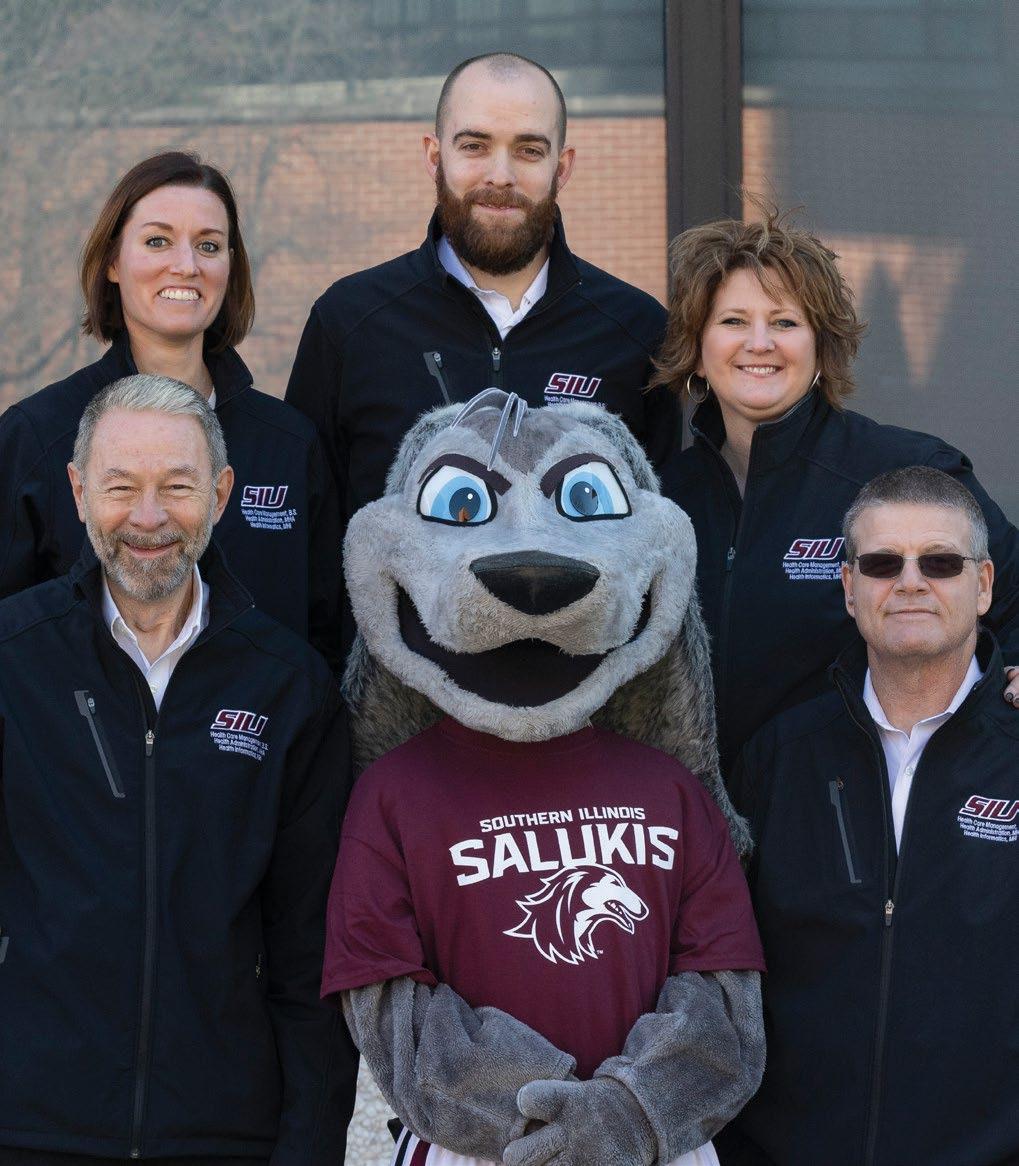
SCHOOL OF HEALTH SCIENCES
UNDERGRADUATE
Bachelor of Science in Health Care Management Minors available in:
• Long Term Care Administration
• Health Information and Informatics Management GRADUATE Masters in Health Administration (MHA)
• Certificate in Clinical Leadership (CCL) Masters in Health Informatics (MHI)
• Certificate in Healthcare Informatics (CHI) Dual MHA/MHI
All undergraduate and graduate programs offered in both online and on-campus delivery formats!
For more information visit our website at: sah.siu.edu or call 618-453-7211
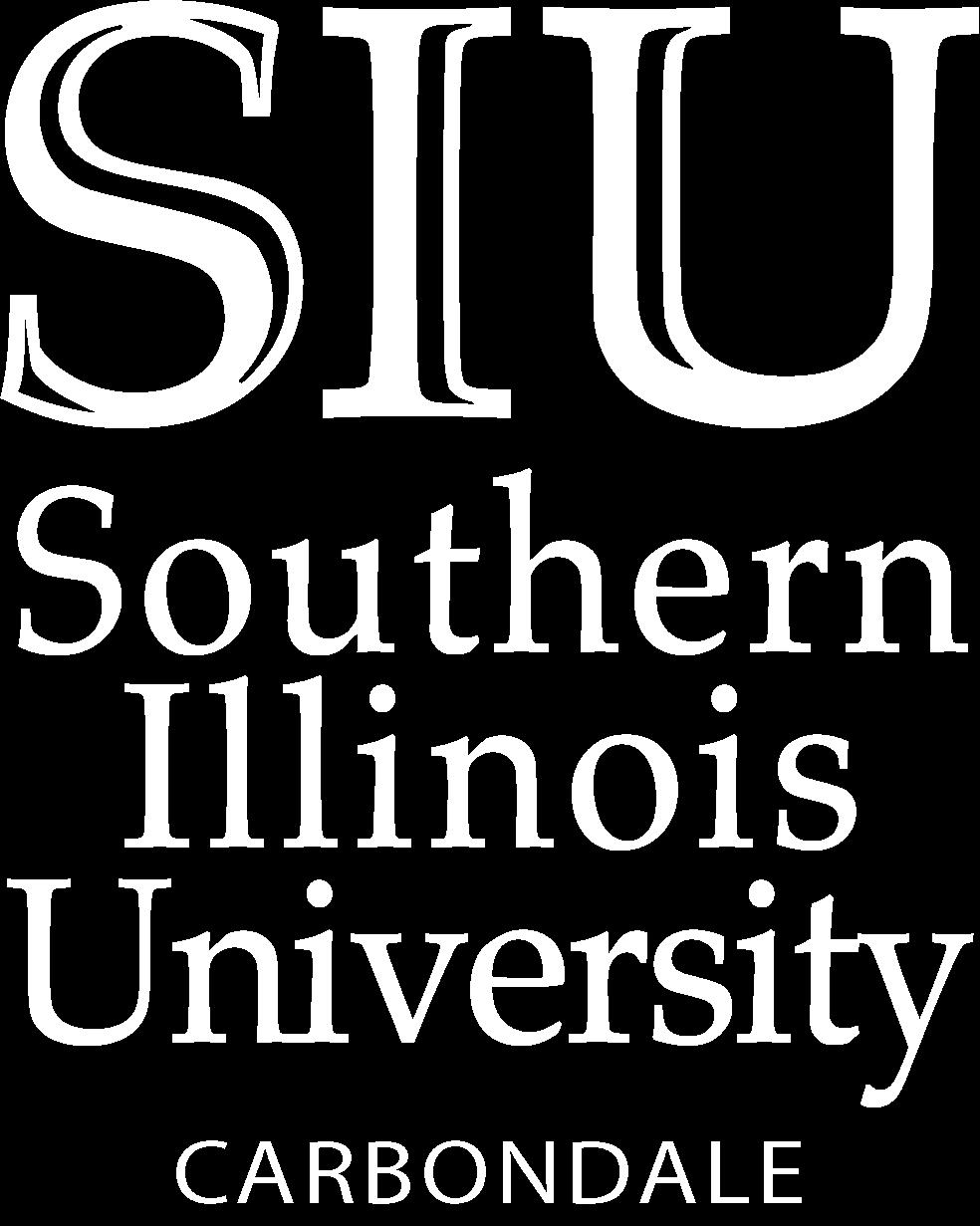
Linda Anders, MBA, MSN, RN, CSRN
Nursing leadership in the acute care hospital setting is faced daily with various challenges. However, in 2020, leadership was involuntary propelled into various difficulties due to staffing concerns and the rapid increase of COVID-19 positive patients. Leadership was forced to concentrate on operations working under their Emergency Operating Procedures. Due to the operational demands placed on leadership, many of their daily tasks were placed on hold, including senior team rounding, daily huddles, and being visible to the bedside staff.
The lack of presence of the leaders in the hospital setting coupled with furloughs, layoffs, and the pandemic's deadly sickness left the staff to work in the space of uncertainty. Many people will accept situations or decisions made by management if they live in a space and place of certainty, even if they do not like the final decision. Uncertainty leaves people scared. When people are afraid and feel like they do not have all the information, they fill in the gaps with stories. These fabricated stories are a way that humans justify and deal with uncertainty. This, coupled with the stress of virtual learning at home, fear of bringing the virus home to their family, and stress of picking up extra hours, really took a toll on our nation's nursing staff.
As we have stepped into 2021, we know that this pandemic is far from over. However, we see the heaviness lift a little, as evidenced by approved vaccines, decreased COVID-19 positive patients in the hospital setting, and stimulus money from the government. Looking forward to this year in healthcare, it still seems uncertain what it will look like. This is where leadership needs to take a small step back from operations to place some focus back on the people. Operations are still essential and always will be, but the staff needs leadership to be visible, to be fully present when interacting with the bedside team members, to celebrate all that the team has been through. One of the focuses of nursing leadership in 2021 should be about restoring a sense of certainty. The certainty that the staff matter, certainty that there is light at the end of the tunnel, and certainty that the work they performed to save countless lives has not gone unnoticed.
Whatever restoring certainty looks like in your immediate surroundings, maybe, but one thing for sure is that the staff is tired and needs affirmation tenfold more now than any time before. Every nursing leader should pledge to focus on restoring certainty in 2021 in light of the unknown.
Lanette Stuckey Ph.D., MSN, RN, CNE, CMSRN, CNEcl, NEA-BC Dean of Nursing/Associate Professor, Lakeview College of Nursing
The United States is preparing for the largest vaccine initiative in decades, with millions of people being vaccinated in short time frames to gain control of the virus and ultimately save lives. Nurses are considered the most trusted profession by the general public and should educate and encourage the public about the importance and safety of the COVID-19 vaccine. Education and encouragement will help ensure high participation, which will help decrease COVID-19 in the United States. Many people will have questions on the COVID-19 vaccine and will be looking at nurses for guidance. Some key points to share with the public about the vaccine include how the vaccines work, safety, and common misconceptions.
Messenger RNA (mRNA) vaccines have been the first COVID-19 vaccines authorized. It is essential to know that even though the mRNA technology is new, it is not unknown. mRNA has been studied for over a decade. mRNA vaccines take the process that cells use to make proteins that trigger an immune response and build immunity to SARS-CoV-2, which is the virus that causes COVID-19. Identical to all vaccines, the COVID-19 vaccines have been rigorously tested for safety before they were authorized to be administered.
Furthermore, the COVID-19 vaccines do not contain a live virus and do not risk causing disease in a vaccinated individual. A common misconception is that the vaccine will affect or interact with a person's DNA. This is not true as mRNA never enters the cell's nucleus, where DNA is kept. The vaccine gives instructions to our cells to make a spike protein. As soon as the instructions are inside the immune cells, they use them to make a protein piece. After the protein piece is created, the cell breaks down the instructions to eliminate the protein. After this, the cell will display the protein piece on its surface. A person's immune system then recognizes that the protein does not belong, and it will begin to build an immune response and make antibodies. At the end of the process, the body has learned how to protect against future COVID-19 infections.
The COVID-19 vaccines are a two-dose series, and both doses are necessary for protection. The first dose primes the immune system by helping it recognize the virus, while the second dose strengthens the immune response. Protection is not immediate; it takes one to two weeks following the second dose to be considered fully vaccinated. The COVID-19 vaccine should be recommended to people regardless of prior symptomatic or asymptomatic COVID-19 infection. However, if a person has a current COVID-19 infection, the vaccination should be postponed until they have recovered. A significant benefit of the COVID-19 vaccines is that people vaccinated will gain protection without having to risk severe consequences of getting sick with COVID-19. It is still uncertain if vaccinated individuals can still carry COVID-19 and transmit it to others; therefore, social distancing and wearing masks is still recommended.
Stopping the pandemic will require that we use all tools we have available, including the vaccine. Nurses should lead the public by example, by giving a strong recommendation to receive the vaccine, which will be critical for vaccine acceptance. Nurses should share the importance of these vaccines to protect their health and those around them.
Reference Centers for Disease Control and Prevention [CDC]. (2021). COVID-19 vaccination. https:// www.cdc.gov/vaccines/covid-19/index.html





Joyce J. Fitzpatrick, PhD, MBA, RN, FAAN, FNAP, FAANP (hon) Director, Marian K. Shaughnessy Nurse Leadership Academy
Elizabeth Brooks Ford Profession of Nursing
Frances Payne Bolton School of Nursing
Distinguished University Professor Case Western Reserve University
“So what is leadership?” This is the simple (yet complex) question that I am often asked.
Here are the answers I provide:
Leadership is part of your being, the moral compass that permeates all that you do, say and believe.
Leadership is an attribute that is reflected in your everyday interactions with everyone in your orbit, your family and friends, your co-workers, and those who you barely know, but with whom you have contact.
Leadership is being authentic in the way you behave with others, the communication that you share and the feelings and thoughts that you have.
Leadership is also a set of skills, learned behaviors that encourage others toward a shared vision, common goals, and a greater purpose.
Leadership is finding meaning and purpose in your work.
Leadership is modeling the way in everything that you do and say.
Leadership is self-awareness, listening to yourself, reflecting on your own beliefs, your knowledge and skills.
Leadership is doing what you can to actualize your unused potential.
Leadership is managing conflict to create true win-win situations.
Leadership is learning from others, the children in the playground who are spontaneous in their support of each other, and the board members in the meeting who are supportive in their own way.
Leadership is humility, knowing that none of us is infallible
Leadership is a belief in the power of our collective humanity, working together for the good of all.
Leadership is sharing your deepest convictions about the way that nursing and health can and should be, reaching for the stars that promote health as a right and not a privilege.
Leadership is caring for those most vulnerable, the neglected, the ill, the downtrodden, the marginalized…just as nurses do every day in every organization.
Leadership is listening to those whose views are radically different from yours and trying to find a common purpose and a common ground for the good of all.
Leadership is professionalism, understanding the social contract that we as nurses have with the public, upholding our ethical obligations to all in our care, and living our professional nursing standards.
Leadership is assuming responsibility for our own actions, being accountable for our actions and understanding the consequences.
Leadership is pushing the boundaries when the boundaries need to change.
Leadership is investing in others’ greatness.
Leadership is identifying needed change and creating the vision and processes to initiate change.
Leadership is providing guidance, to individuals, groups, and organizations.
Leadership is active and decisive decision-making to achieve shared goals.
Leadership is taking a risk, to implement a vision and achieve goals.
Leadership is understanding yourself, being aware of your potential and the power of intentional communication.
Leadership is building relationships with your those who can help you and those you can help, building relationships for the purpose of helping others to actualize their potential.
Leadership is mentoring others, and allowing yourself to be mentored.
Leadership is promoting collaboration and building community.
Leadership is knowing when to step back, when there is an affront to your integrity.
Leadership is being transformational.
Leadership is being an advocate, for patients, for colleagues, and for the public health.
Leadership is being a trusted professional.
Leadership is motivating others to act.
Leadership is embracing change and effecting change as needed.
Leadership is acclaiming others’ successes and assisting them to achieve their highest potential.
Leadership is YOU!
How many of these leadership attributes describe you?
Which of these leadership attributes do you want to develop or strengthen?
What is your plan to make it happen?

April 22, 2021 • 2-6PM
As a professional nurse, you know the challenges of the continually evolving healthcare field. Due to increased emphasis on preventive care, growing rates of chronic conditions, and demand for services from the baby-boom population, employment of nurses is projected to grow 7% by 2029 according to the Bureau of Labor Statistics. At our spring Virtual Graduate Open House: Discover What’s Next, you’ll learn how our graduate nursing programs can help keep you current, and prepare you for the next step in your career.
lewisu.edu/discoverwhatsnext/

Cedar Park Regional is offering a $10,000 sign-on bonus and relocation assistance for RNs with at least one year of acute care experience in the following areas:
Med/Surg, ICU, ED, Labor & Delivery
Cedar Park Regional Medical Center is a 126 bed acute care facility located in the northwest corridor of Austin, Texas, one of the fastest growing areas in the nation. The area offers an abundance of outdoor activities with many parks, hiking and bike trails. Austin is known as the culture center of Texas and prides itself on being dubbed the live music capital of the world. The area will not disappoint with many diverse shopping venues, amazing dining experiences, microbreweries and wineries to suit every taste.
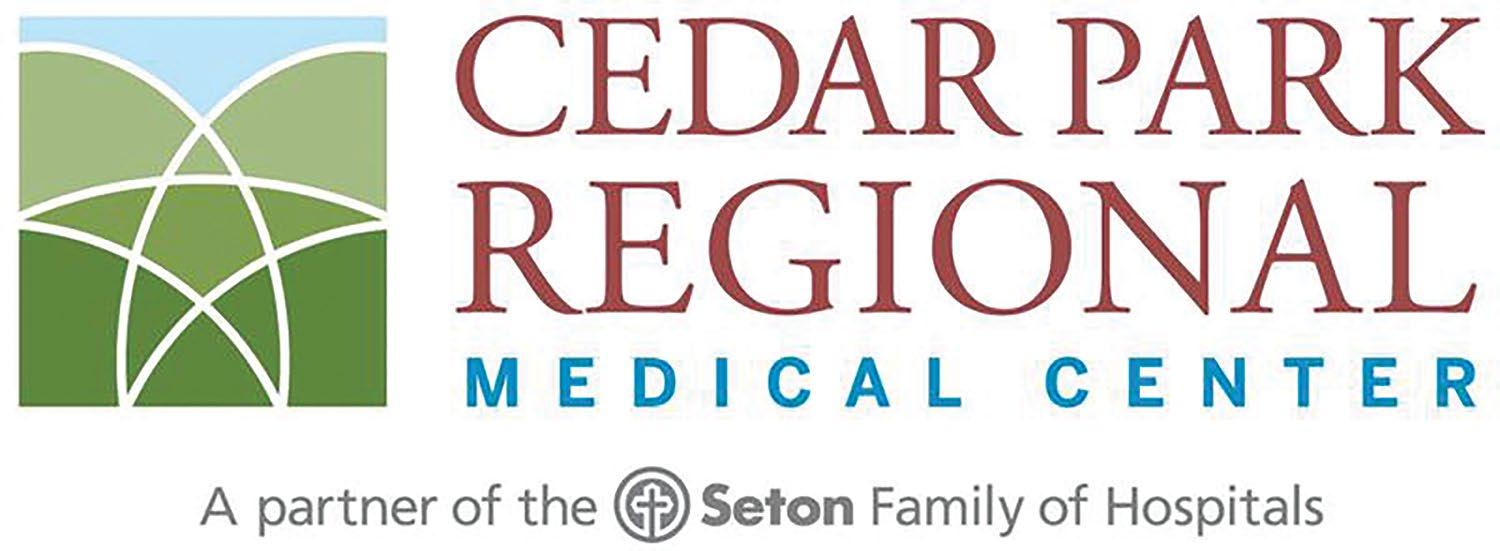





The IDFPR home page (https://idfpr.com/ ) has a direct link to the following:
The State of Illinois Coronavirus Response Site: The COVID-19 Vaccine Plan, up-to-date information on what Illinois is doing protecting the health, safety, and wellbeing of Illinoisans. It can be found at https://coronavirus. illinois.gov/s/
IDFPR’s webpage with resources for Illinois residents and licensees impacted by COVID-19. It may be found at https://www.idfpr.com/COVID-19.asp This webpage lists the guidance and variances issued by IDFPR during the COVID-19 pandemic. It includes COVID-19 relief options available concerning evictions, mortgages and student loans. The Out of State Temporary Practice Permits will expire May 31, 2021.
IDFPR has streamlined licensing for Military members and their spouses who are seeking professional licensure in Illinois. Public Act 100-286 (2019) expedites the license review process for Military Service Members who are an active duty member or whose active duty service concluded within the preceding two (2) years before application. This review process also is applicable to spouses of service members. IDFPR has hired a military liaison to work directly with Military Service Members to provide them with tailored guidance when applying for professional licensure in Illinois. Use this link for additional information www.idfpr.com/military.asp

The Illinois Nurse Practice Act Rules were finalized on January 4, 2021. A copy is available at this link: https://www.ilga.gov/commission/jcar/ admincode/068/06801300sections.html
The Illinois Nursing Workforce Center (http://nursing. illinois.gov/ )
Education: there is a list of all Illinois nursing education programs, beginning with the pre-licensure nursing education programs approved by the Board of Nursing. On this same page are program pass rates for the past five years as well as five years of admission and graduation data for the 132 pre-licensure nursing education programs.
Post-licensure Illinois nursing education programs are separated between baccalaureate degree completion and graduate education opportunities. The graduate education page includes a grid of which practice specialty each graduate program includes. http://nursing.illinois. gov/Gradeducation.asp
Reports highlighting data collected during online license renewal are available, and date back to 2007 may be found at http://nursing.illinois.gov/ResearchData. asp Thank you to everyone that completed the RN post-license renewal voluntary survey, a report is to be completed by the end of the year.
Illinois Nursing Licenses Data Overview (2020) was created in March 2020. This short report includes RN specialty area as well as geographic distribution of nurses throughout Illinois, including by county. http://nursing. illinois.gov/PDF/2020-03-30_IDFPR_INWC_RN_License_ Summary.pdf

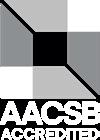
As always, the IDFPR home page (https://idfpr.com/ ) offers several features for licensees, including:
• To print your license or download an electronic copy to your phone: use the icon under the blue middle section of the IDFPR homepage. www.idfpr. com
• Address update: Please note that all IDFPR correspondence are now delivered electronically, including renewal reminders (in lieu of the paper postcard sent by U. S. Mail). Licensees are strongly encouraged to visit IDFPR’s online address change webpage (https://www.idfpr.com/applications/ LicenseReprint/ ) to provide a current email address and ensure contact information is up-to-date and accurate.
• Name change: Change of name CANNOT be completed via this online process. If your name has changed, you must submit a written notice to the Department and include documentation of the name change (marriage license, court order, or divorce decree) For a copy of the written notice, please use this link https://www.idfpr.com/Forms/ DPR/DPRCOAnamechange.pdf
If you have questions, assistance is available Monday through Friday by contacting the IDFPR call center at 1-800-560-6420, or by email at FPR.PRFGROUP09@ illinois.gov

Elementary grades 1-5. To apply, visit www.KCSD96.org and click the
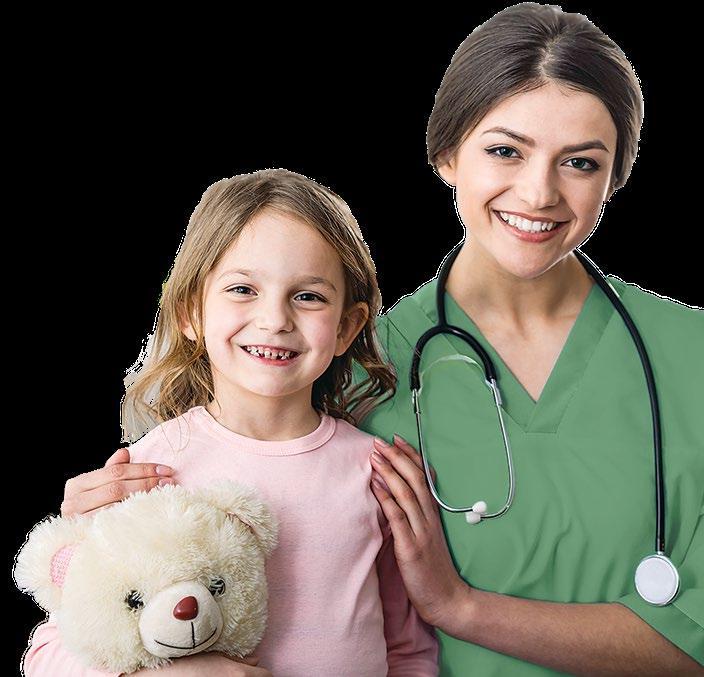

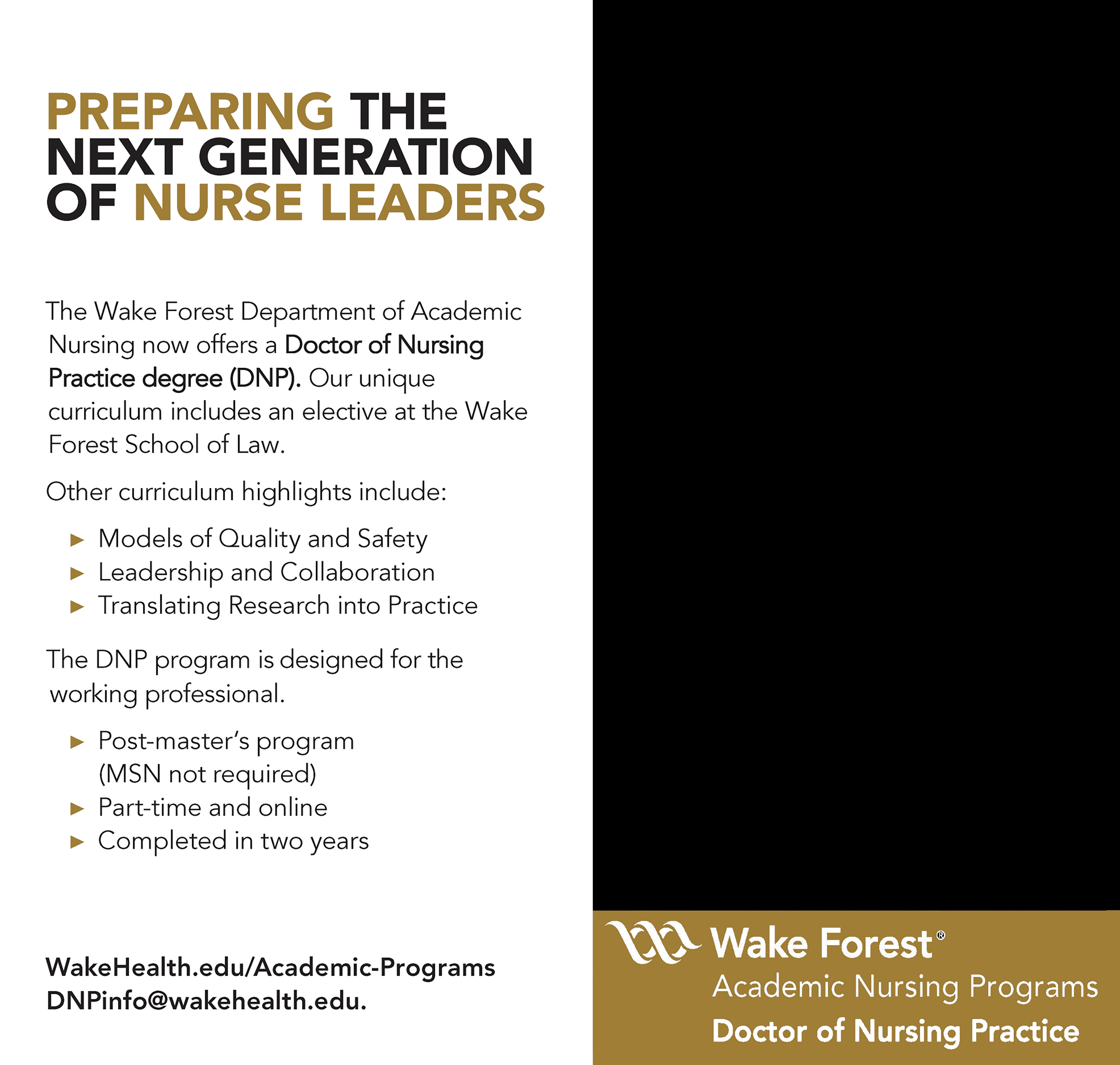







We would like to recognize and thank the following donors who were instrumental in helping us achieve our goals in 2020. Because of their general support we gave away over $12,000 in scholarships and awarded $10,000 in grants through our new grant program.
Lisa Anderson Shaw
Cheryl Anema
Laurie Anema
Elizabeth Aquino
Mary Barton
Barbara Bertucci
Amanda Buechel
Katherine Blachowski
Janet Borre
Mary Bortolotti
Nancy J. Brent
Cathy Burke
Simendea Clark
Dolores Clement
Yalanda Comeaux
Karen Crofton
Lee Crumbaugh
Colleen Duffy
Karen Egenes
Don Feinberg
Barbara Ferrari
Raechel Ferry-Rooney
Stephen Flowers
Steve Flowers
Susana Gonzalez
Chris Gurnick
Jeannine Haberman
Jake Hanifin
Robin Hannon
Karl Hartmann
Patricia Hattenhauer
Brandon Hauer
Susan Johanson-Lentz
Kathy Kane Villina
Phyllis B Kantor
Karen Kelly
Mary Kelly
Emily Kirschenbaum
Susan Krawczyk
P. Joan Larsen
James LaRue
Janet Lynch
Kathleen Lazzara
Elizabeth MacKay
Anthony Magera
June Maguire
Charlotte Maynard
Mary Mcdermott
Jane Miller
Mary Newman
Linda Olson
Mary Onorad
Kyleigh Oosthuyse
Ann O'Sullivan
Suzanne Phipps
Paulette Buczko Piotrowski
Marilyn Rehberg
Nanci Reiland
Linda Roberts
Bonnie Salvetti
Ruthann Sanders
Laurel Schaap
Maureen Shekleton
Gretchen Shepherd
Seth Squadron
Dorothy Stratman-Lucey
Susan Swart
Carla Tozer
Catherine Tredway
Diane Vander Ploeg
James Veirty
Clint Verhagen
Carol Warfield
Joline Weidner
Rebecca Weis
Sheryl Wernsing
Madeline Wise
Mary Witting
Elizabeth Wojciechowski
Stephanie Yohannan
Loren Zilberbrand
Arthur L Davis Publishing Agency, Inc
Walter W. Schultz Agency, Inc
Smits Funeral Homes, LTD Stepping Stone Financial

In Honor Donations
Heidi Bajek
Stephanie Mendoza
Memorial Donations
Thomas Ramage
Anne MacKay
Regina Martin, RN, BSN
Carmen Lackouitz
Carmen Lydia Alvarez
Catherine Hartmann
Charles Chesley Woodcock
Danelle Kelly







Nancy J. Brent, MS, JD, RN
If you have a legal question for Nurse Attorney Nancy Brent, please send it to susan@sysconsultingsolutions. com. The INF has the right to review and publish selected questions and responses.
Question:
An RN who has worked at the bedside for over 30 years writes that she has always gotten a second nurse to witness getting consent from a parent over the phone for a patient who is a minor. A younger staff nurse told her that witnessing a consent for a minor is not done anymore. The RN thought it was a law, and if not, it seems to be best practice. Have things changed, she asks?
Response:
No. State statute or administrative rule requires you to have a second RN witness a parent's phone consent for his or her minor child who is being treated in your healthcare facility.
This RN's practice most likely stems from working in hospitals whose own policies and procedures required that this occurs.
The RN's comments that the procedure seems to be "best practice" are noteworthy from a risk management perspective.
Risk management is an essential internal component of a health care delivery system. It is a precise process that attempts to reduce preventable injuries and accidents and also prevent financial loss for the institution.
The four main components of reducing risks to the health care entity are "risk identification, risk analysis, risk treatment, and risk evaluation."
For this RN, the risk management policies and procedures that governed the requirement to get a second RN to confirm consent were obtained from a parent likely emanated from these components.
In applying these elements to the RN's question, one can identify several risk factors in not obtaining a witness to the phone consent:
What if the parents are divorced? Who has the legal right to consent for the minor child? What if the parent who is legally able to provide consent later has doubts and changes his or her mind, saying consent was never



given? How many incident reports have been received by the risk management department from nurses that document these and other issues?
The consent risk analysis would most probably be seen as relatively high and, therefore, the importance of identifying how to treat the risk is to avoid its occurrence.
Treating this particular risk apparently appeared to the RN's employer reasonably simple: get a second person to hear the consent given and document it according to adopted policy and procedure.
Evaluating the treatment instituted for the risk includes the frequency of occurrence and the severity of outcomes, if any, after the treatment is instituted.
Although not a legal requirement, such a practice might help you—and your employer—if a later challenge to the consent given is raised.
You can learn more about risk management in the article, "Steps in the Process of Risk Management" @ researchgate.net/publication/308888285_Steps_in_the_ Process_of_Risk_Mnagement_in_Healthcare.
A discussion of parental consent for a minor is not complete without a brief conversation about when a parent's consent is unnecessary for a minor's care.
A minor in Illinois is defined as an individual who is 17 years of age and under. The law sees such individuals as not having the legal capacity to provide the required consent.
Generally speaking, then, as the RN's submitted question illustrates, it is the parent(s) of the minor who provide consent for treatment. Others that can give consent for a minor include a guardian or person standing in the parents' place (in loco parentis doctrine).
There are specific exceptions to this mandate in many states and specifically in Illinois under the Consent by Minors to Health Care Services Act.
They include:
Medical Emergency
When the minor's condition is an emergent one, meaning that the minor's health or very being is such that waiting to obtain consent for treatment would "adversely affect the condition of the minor's health," parental consent is not needed. Whether the minor's condition requires immediate emergency care rests solely with the health care provider, including an advanced practice registered nurse (APRN).
Regardless of age, a married or pregnant minor can consent to healthcare services, including those from an advanced practice registered nurse (APRN).
A minor between the ages of 14 through 17 who is not living with parents or a legal guardian or unable or unwilling to return to his parents' home, and is managing his personal affairs, may consent to primary care (including screening, medication, and immunizations in an out-patient setting) under specified conditions (including the minor being identified in writing by an attorney licensed to practice law in Illinois or a school social worker).
If you provide care to minors in any capacity in any setting, following your facility's requirements for obtaining consent for those 17 and under is essential to avoid potential liability for both you and your employer.
You also need to be knowledgeable about and follow Illinois law applicable to consent for health care by, or for, minors.
Potential liability for you would rest in being named a defendant in a civil case brought by the minor's parents for not obtaining consent as Illinois law requires.
Potential culpability for you may also be alleged in a professional disciplinary action for a violation(s) of the Illinois Nurse Practice Act and its Rules that apply to obtaining proper consent.
For example, a parent might allege that your failure to obtain their consent is a failure to conform to practice standards.
A regular reading, then, of the Act and its Rules is vital. Refreshing your memory about consents for minors can easily be done through a 2019 Illinois Health and Hospital Association's summary of applicable Illinois' law at team.iha.org/files/non-gated/legal/consent-by-minors. aspx?ext=
THIS INFORMATION IS FOR EDUCATIONAL PURPOSES ONLY AND IS NOT TO BE TAKEN AS SPECIFIC LEGAL ADVICE BY THE READER. IF LEGAL OR OTHER ADVICE IS NEEDED, THE READER IS ENCOURAGED TO SEEK SUCH ADVICE FROM A COMPETENT PROFESSIONAL.

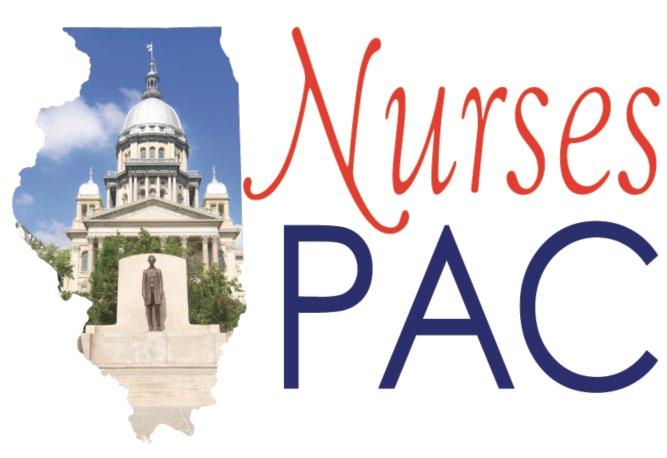
Nurses want to provide quality care for their patients.
The Nurses Political Action Committee (Nurses- PAC) makes sure Springfield gives them the resources to do that.
Help the Nurses-PAC, help YOU!
So. . . . . . . if you think nurses need more visibility if you think nurses united can speak more effectively in the political arena if you think involvement in the political process is every citizen’s responsibility.
Become a Nurses-PAC contributor TODAY!
❑ I wish to make my contribution via personal check (Make check payable to Nurses-PAC).
❑ I wish to make a monthly contribution to NursesPAC via my checking account. By signing this form, I authorize the charge of the specified amount payable to Nurses-PAC be withdrawn from my account on or after the 15th of each month.
(PLEASE INCLUDE A VOIDED CHECK WITH FORM)
❑ I wish to make my monthly Nurses-PAC contribution via credit card. By signing this form, I authorize the charge of the specified contribution to Nurses-PAC on or after the 15th of each month.
❑ I wish to make my annual lump sum Nurses-PAC contribution via a credit or debit card. By signing this form, I authorize ANA-Illinois to charge the specified contribution to Nurses-PAC via a ONE TIME credit/debit card charge.
❑ Mastercard ❑ VISA
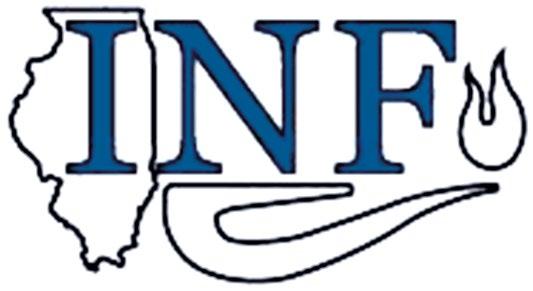
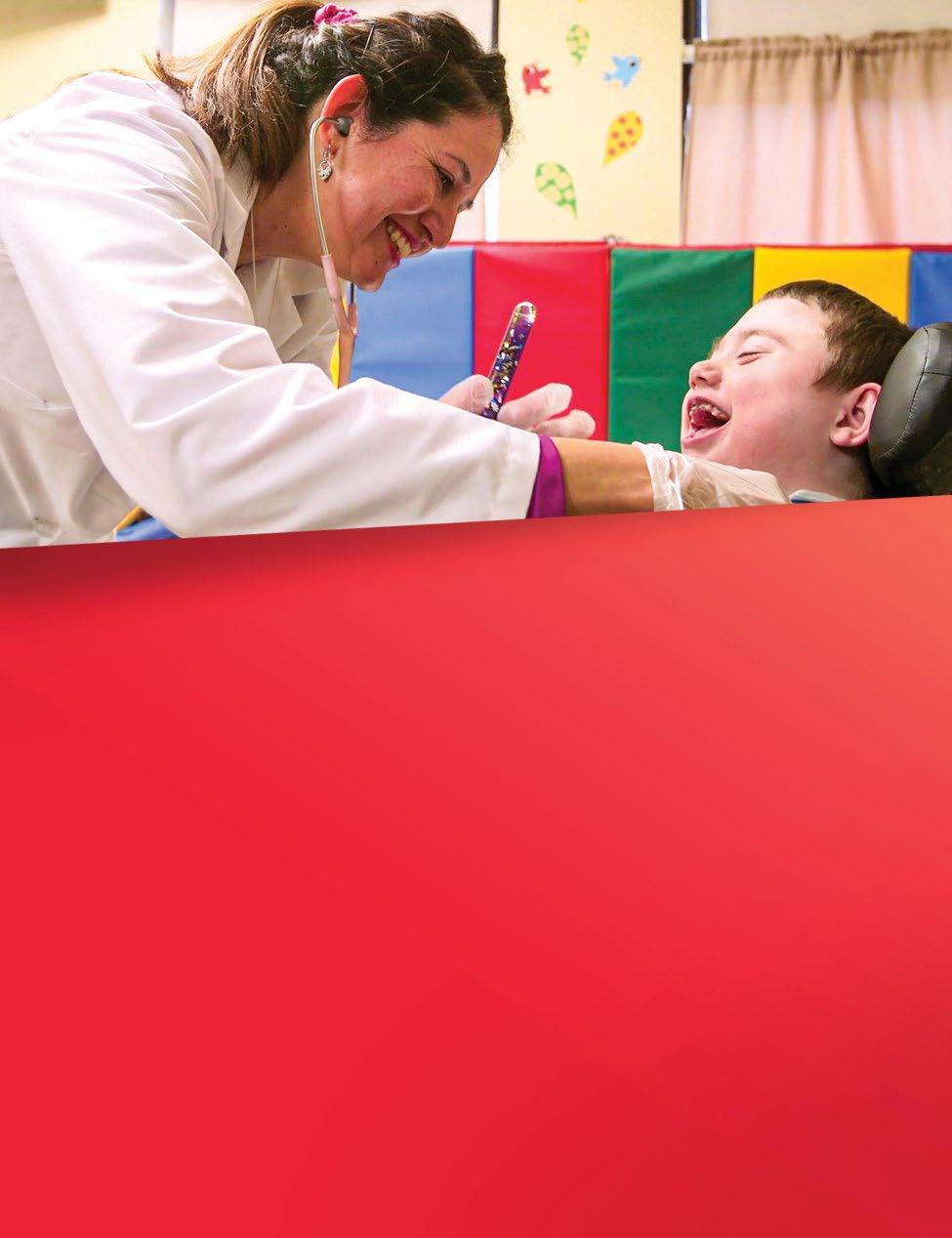


offer over 30 continuing
From anticoagulation therapy to wound management. Designated contact hours for pharmacology for APRNs! Learn your way with live, independent study, online interactive, and hybrid programs. Education in Your Own Time and Place http://www.usi.edu/health/center-for-healthprofessions-lifelong-learning/certificate-programs/ 877-874-4584


We take health and wellness personally at Sinai Chicago. We believe that excellence in health care is about more than just medicine, technology, tests and treatments. It’s about deeply caring for people with dignity and respect. That’s who we are. That’s what we do. That’s been our ethos for the past century, and never has it been more critical than during the global COVID-19 pandemic.
Sinai Chicago’s nurses are the backbone of our health care system. Proudly serving Chicago’s West and Southwest sides, these heroes go the extra mile every day to make a difference. With a Level 1 Trauma Center, more than 800 physicians, 654 licensed beds and eight physician residency programs, Sinai Chicago offers a distinctive, rewarding opportunity to walk the extra mile to make sure every patient has what he or she needs to take control of their own health.
Caring for people is more than a job for Sinai Chicago nurses. It’s a mission. It’s OUR mission and one that we take personally.
We offer excellent opportunities to learn, grow and advance your career with extensive crosstraining, as well as competitive salaries and benefits.